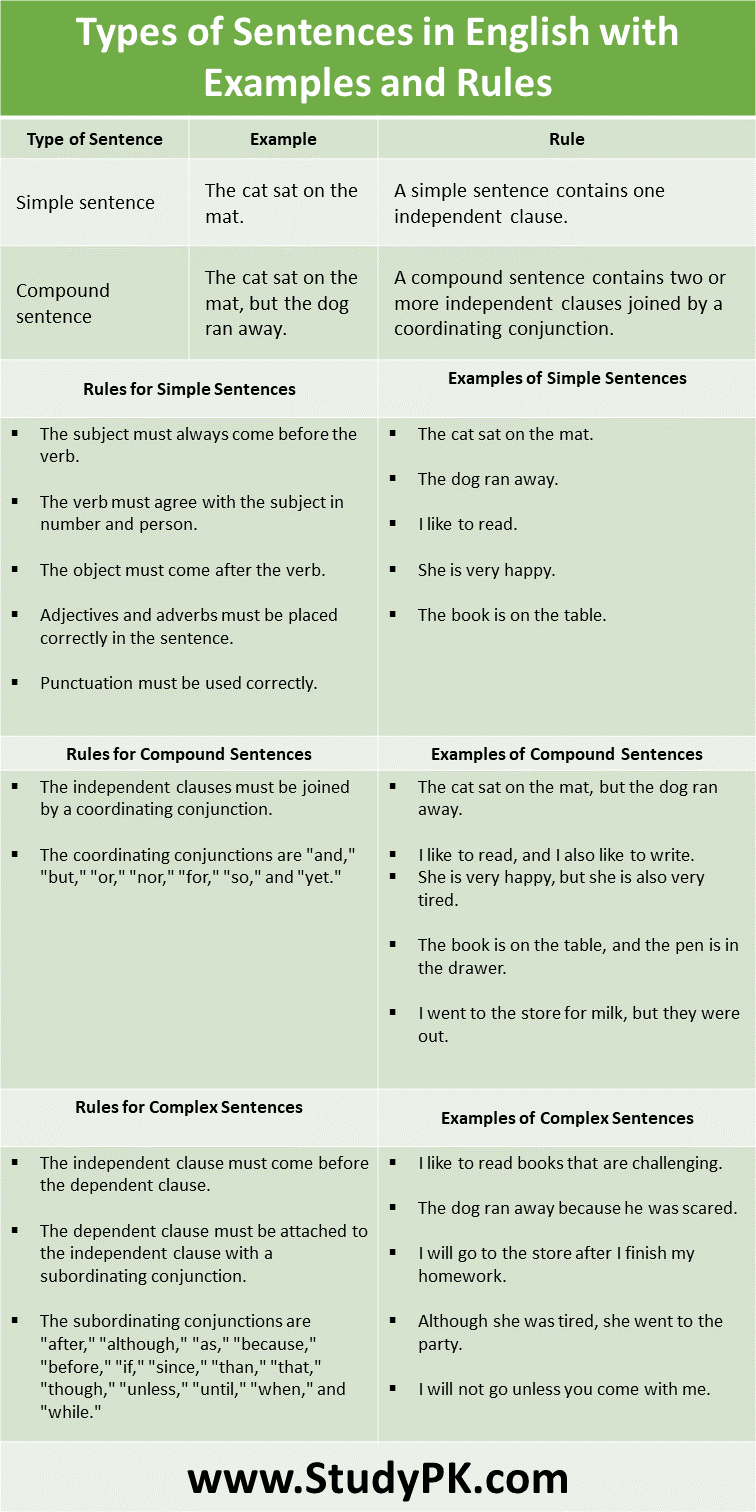Sentence Construction in English: A Table of Examples and Rules
Sentence Construction in English
Sentence construction is the way that words are put together to form a sentence. In English, sentences are typically structured with a subject, a verb, and an object. The subject is the person or thing that is doing the action, the verb is the action that is being done, and the object is the person or thing that is being acted upon.
There are many different types of sentences in English, but they can all be broken down into three basic categories: simple, compound, and complex.
- Simple sentences contain one independent clause. An independent clause is a group of words that can stand on its own as a complete sentence. For example:
- The cat sat on the mat.
- The dog ran away.
- Compound sentences contain two or more independent clauses. The independent clauses are joined together by a coordinating conjunction, such as “and,” “but,” or “or.” For example:
- The cat sat on the mat, but the dog ran away.
- I like to read, and I also like to write.
- Complex sentences contain one independent clause and one or more dependent clauses. A dependent clause is a group of words that cannot stand on its own as a complete sentence. It must be attached to an independent clause in order to make sense. For example:
- I like to read books that are challenging.
- The dog ran away because he was scared.
The basic rules of sentence construction in English are as follows:
- The subject must always come before the verb.
- The verb must agree with the subject in number and person.
- The object must come after the verb.
- Adjectives and adverbs must be placed correctly in the sentence.
- Punctuation must be used correctly.
By following these basic rules, you can construct clear and grammatically correct sentences in English.

Leave a Reply